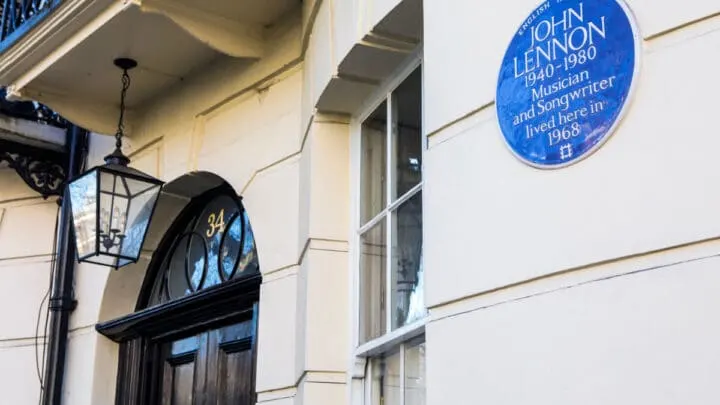Ever been wandering through London and noticed a small blue plaque adorning buildings?
These plaques are awarded to those who have made significant contributions to society – and mark where in the capital they used to reside. Taking a self-guided tour around them is one of our favourite (free) things to do in the capital – have fun trying to see who you can spot.
Not sure where to start? Don’t stress – here’s our London blue plaque guide.
Famous Blue Plaques in London
Vincent Van Gogh
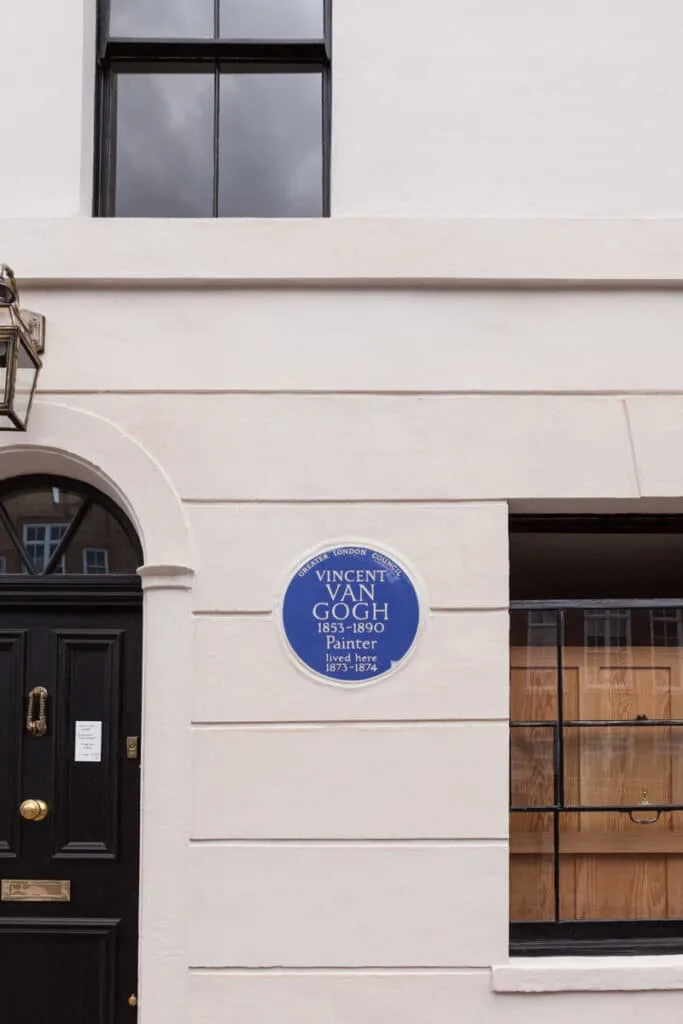
Van Gogh’s blue plaque in London can be found at 87 Hackford Road in Stockwell, South Lambeth.
He was sent to London by his employers at the time, the Dutch art dealers Goupil & Co – and his home can even be seen in a sketching that Van Gogh made whilst staying at the house.
As one of the most famous post-Impressionist artists – scratch that – one of the most famous artists of all time, it was only fair that his London home got a little ceramic plate. Even if he did only live there between 1873 and 1875.
George Orwell
Whilst George Orwell’s time at 50 Lawford Road in Kentish Town was very short-lived (he lived here from August 1935 until January 1936), his contribution to literature cannot be understated.
He actually lived in the flat alongside his friends Rayner Heppenstall and Michael Sayers – both fellow writers – and it was here he wrote most of his novel Keep the Aspidistra Flying.
But it’s his other novels that are arguably more famous – Animal Farm is a curriculum staple in many schools across the UK, and Nineteen Eighty-Four is a cult classic. Seeing his blue plaque in London is a bucket-list must for many bookworms.
Mary Seacole
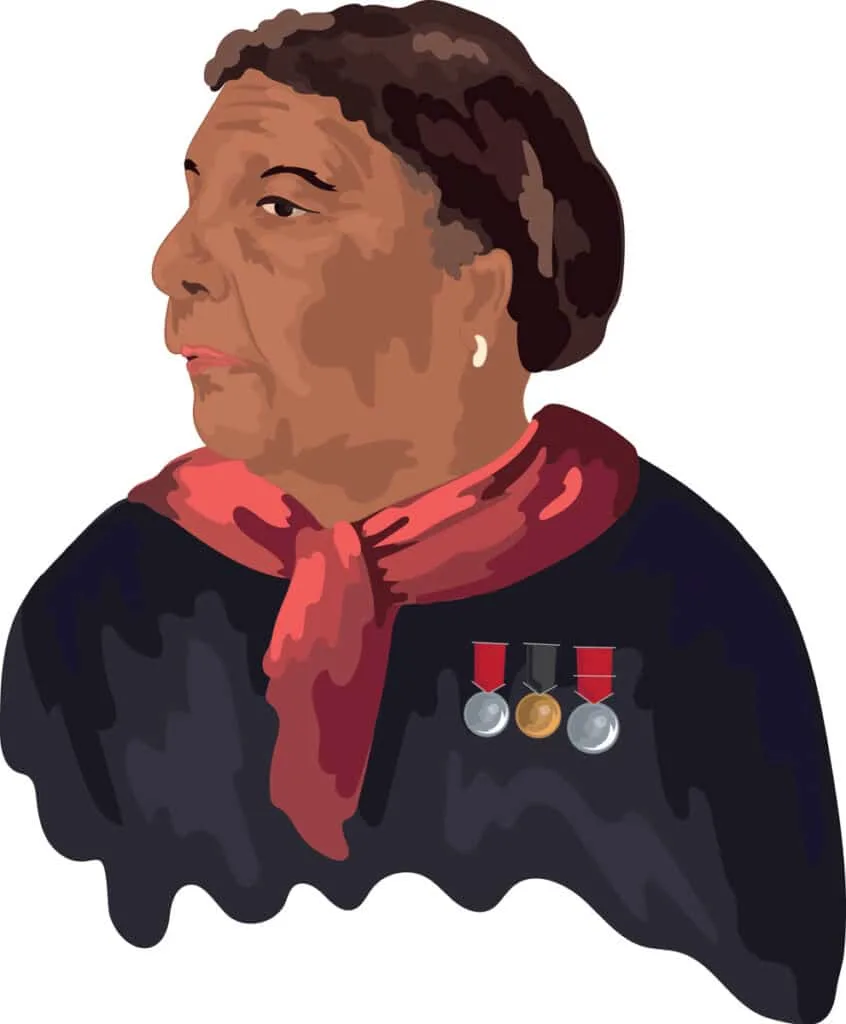
Mary Seacole’s blue plaque sits on number 14 Soho Square, in the place where she began to write her autobiography, and commemorates the life of the heroic nurse during the Crimean War.
She followed in the footsteps of her mother, who also worked in the medical field. During the 1840s, she nursed patients back to health during severe outbreaks of cholera in Jamaica (her home country) and Panama.
But when it came to the Crimea War, Seacole was rejected by British medical experts after making the journey to the UK. In response, the black nurse set out for the Crimea all alone. She worked on the frontline and saved countless lives. A true hero.
Emmeline + Dame Christabel Pankhurst
Known for their incredible work as women’s rights campaigners, Emmeline and her daughter Dame Christabel Pankhurst are honoured forever with a blue plaque at Notting Hill’s 50 Clarendon Road.
The Suffragettes led the explosive campaign for women’s right to vote in the early 20th century. They were partially successful in 1918 when some women were granted this right, but they continued to fight until 1928, when Emmeline died.
A few weeks later the Representation of the People Act became law – this meant that women over 21 years of age could vote.
Charles Dickens
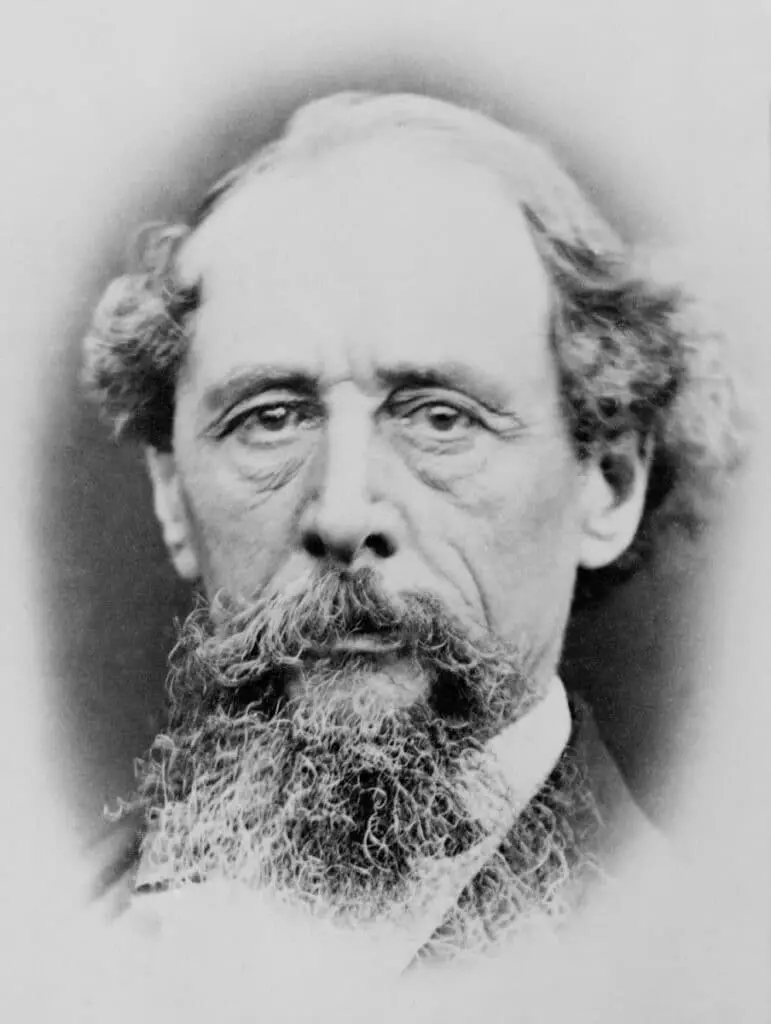
One of the older blue plaques in London is the one belonging to Charles Dickens. First unveiled in 1903, 48 Doughty Street in Holborn has paid tribute to the Victorian author ever since.
Known for novels such as Oliver Twist, A Christmas Carol, and David Copperfield, it’s no secret that Dickens was inspired by much of London when writing his books – in fact, many locations that exist today crop up in his work, including the Palace of Westminster and St Paul’s Cathedral. You can find a few more here.
Sigmund Freud
With Sigmund’s plaque sitting parallel to one dedicated to his wife, Anna Freud, visiting 20 Maresfield Gardens in Hampstead, is a 2-for-1 kind of deal. This house is now also home to the Freud Museum, which showcases the psychoanalysts’ life and work between 1938 and 1939.
In this collection, you’ll spot letters that Freud himself wrote, claiming the house was “far too beautiful” for him to live in it. Check it out for yourself and see if you agree.
John Lennon
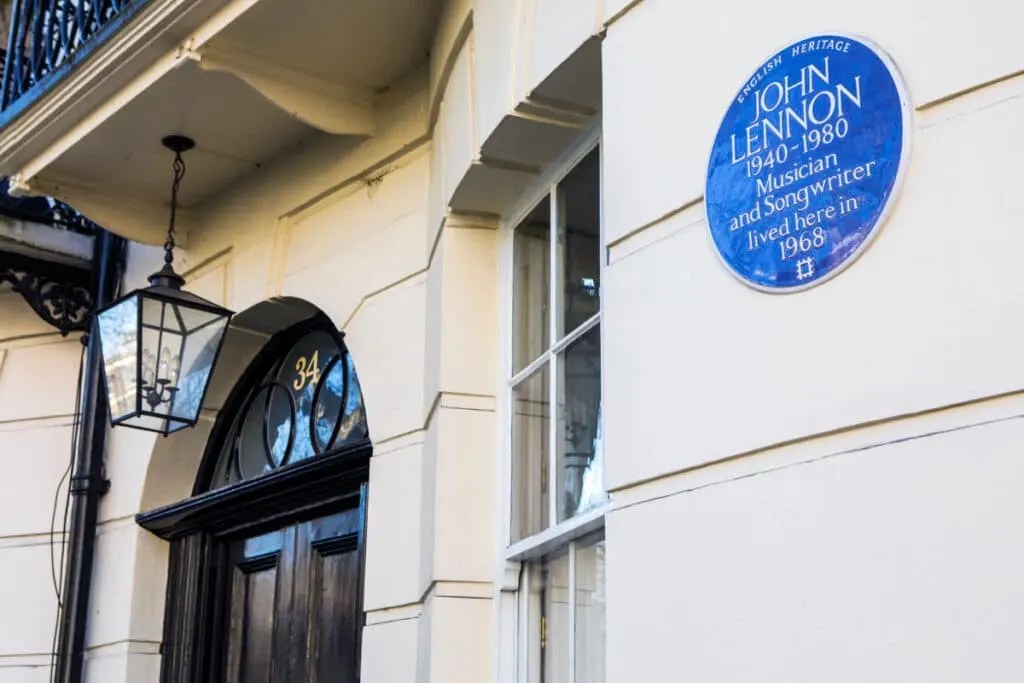
A name that needs no introduction. John Lennon’s Marylebone plaque was unveiled in 2010, on the Beatles member’s former home, which he shared with Yoko Ono in 1968.
His move to Montagu Square followed The Beatles’ release of album Sergeant Pepper’s Lonely Hearts Club Band – what was known as the ultimate anthem to 1967’s ‘Summer of Love’.
Though, this flat has also had its fair share of controversy. In October 1968, police raided Lennon’s home and found cannabis there – but by this point John had also started experimenting with harder substances.
Despite his struggles, John Lennon is easily one of the most influential musical figures of all time – we dare you to find someone who doesn’t know every single word to Imagine.
Laurie Cunningham
Amongst football-lovers, Laurie Cunningham is a household name – the left winger was the first black player to represent England in 1979.
Cunningham eventually went on to become the first British player to sign for Real Madrid. He was also known for his love of dancing – there’s even a rumour that he used prize money from dancing competitions to pay fines he received for turning up late to training.
He sadly died at just 33 in a car crash in Madrid, but his incredible legacy was honoured with a blue plaque in 2016.
Bob Marley

First erected in Chelsea in 2019 (on the side of the house he lived in throughout 1977), Bob Marley’s plaque is a testament to the musician’s influence on artists all around the world.
It may have been a fleeting visit, but it was incredibly important: Marley fled Jamaica in 1976 after an attempted assassination, and whilst seeking refuge in London he and the Wailers recorded Exodus. This album features the likes of Jamming and One Love, undeniably some of his biggest hits of all time.
Psst… If you’re a fan of Bob Marley, you’ll want to check out this new exhibition coming to the capital in early 2022.
Lady Diana Spencer
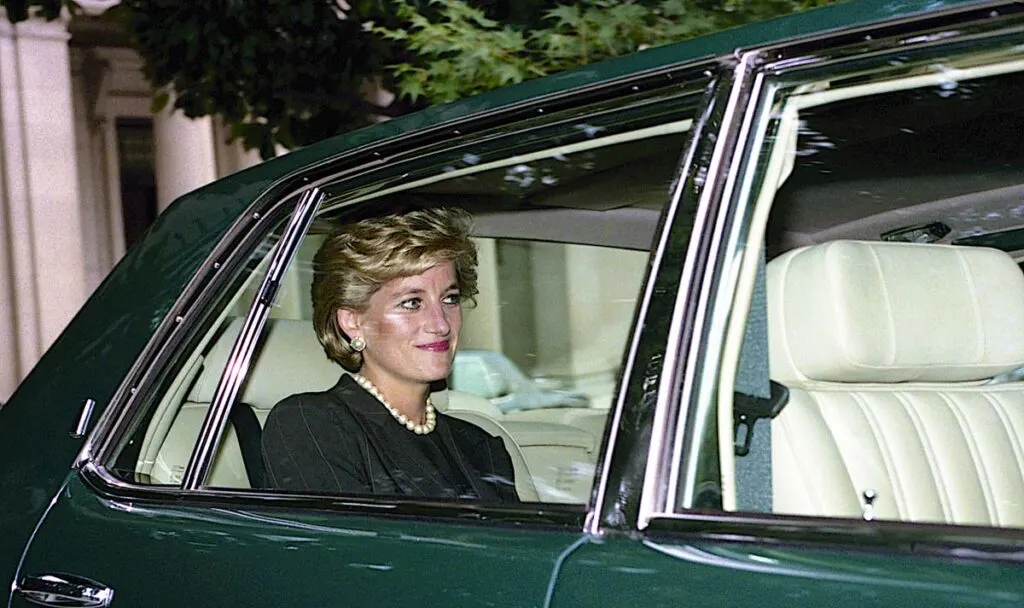
Lady Diana Spencer is a recent recipient of a new blue plaque – it was unveiled in 2021 at Flat 60, Coleherne Court, on Old Brompton Road in Kensington and Chelsea. She lived here for a couple of years towards the end of the 1970s.
Whilst she was far more famous for being Princess Di, her plaque was awarded due to her relentless philanthropy and charity work. She opened the Landmark Aids Centre in Tulse Hill in 1989, ending stigma and bringing huge amounts of awareness to the disease.
Want to know more? You can have fun finding out who has a blue plaque here.
Alfred Hitchcock
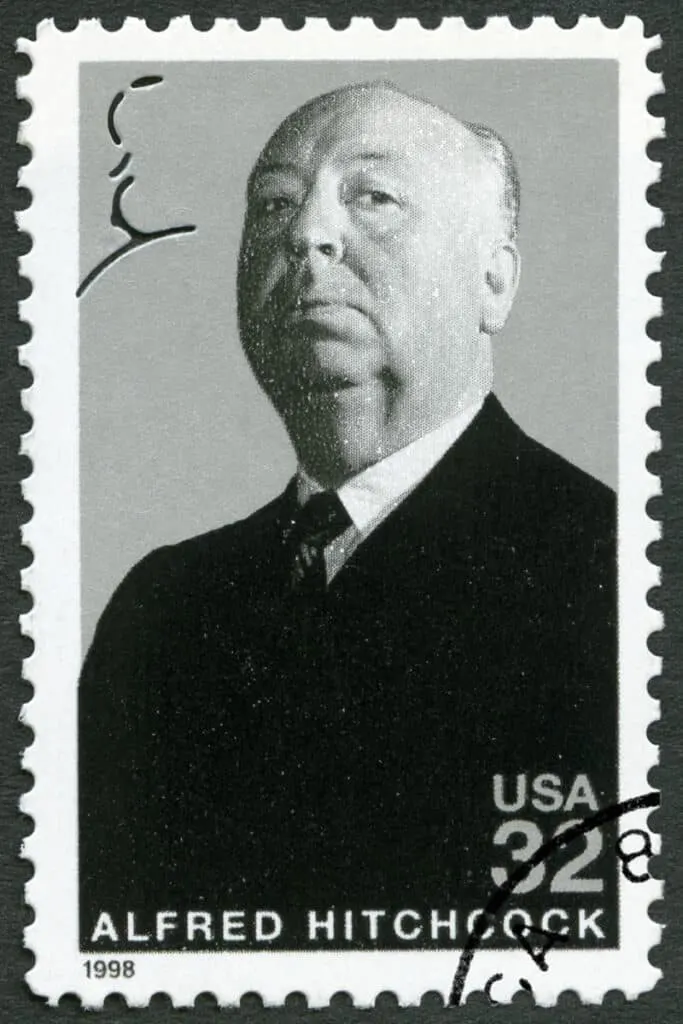
Head to 153 Cromwell Road in South Kensington and you’ll find the blue plaque of one of cinema’s most revered directors, Alfred Hitchcock.
The man was behind the camera on classics like Virtigo, Rear Window, North by Northwest and an exhaustive list of more than 50 others, and through his work added much to the Noir genre and indeed film more broadly.
He’s known these days ‘as ‘the Master of Suspense and the chances are, if you’ve felt rising tension on screen it’s because this man’s legacy has influenced the directors at work ever since he was putting thrillers on the silver screen himself.
Charlie Chaplain
Another hero of the big screen, though one from the other side of the camera, Charlie Chaplain’s legacy is undeniable. He was the star of the silent movie, mastering slapstick and warming the hearts of generations since.
Chaplain was born into poverty in the south London neighbourhood of Elephant and Castle and raised by a single mother suffering from mental illness. The plaque that commemorates his name at 15 Glenshaw Mansions on Brixton Road belongs to the first stable home Chaplian lived in.
He shared the place with his brother and although Charlie was often away for work it’s said that he always looked forward to returning to the house.
Virginia Woolf
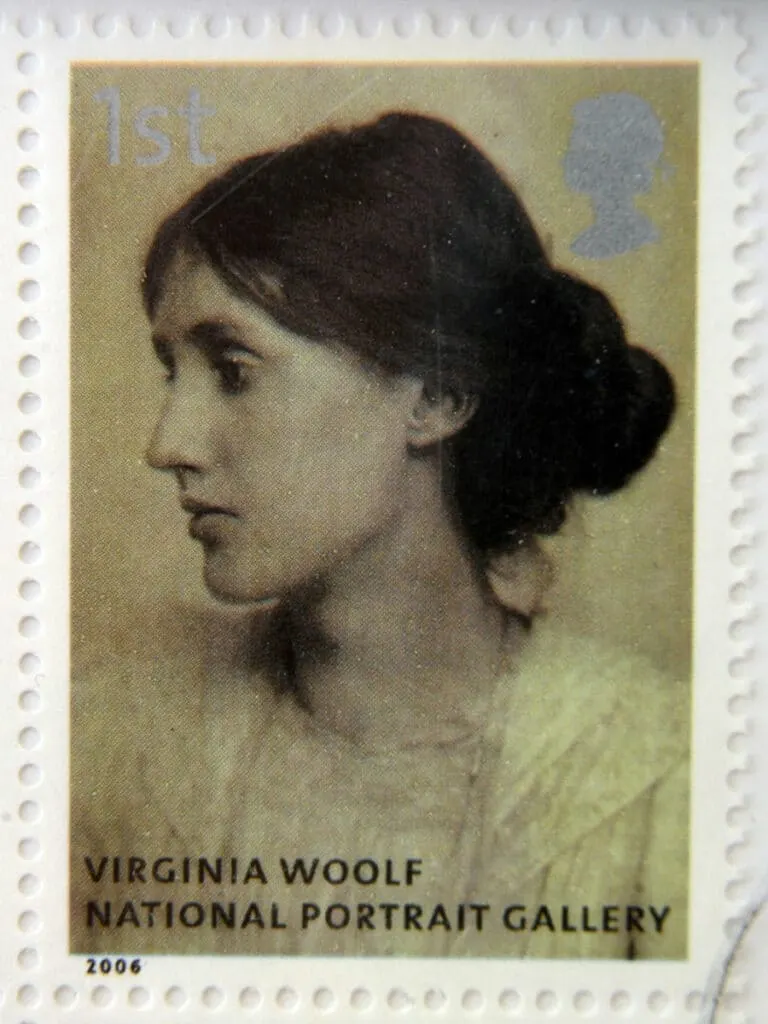
29 Fitzroy Square in Fitzrovia was home to one of Britain’s most important writers, Virginia Woolf. She wrote A Room of One’s Own and Orlando among other classics and had an enormous influence on women through her feminism and literature through her pioneering use of stream-of-consciousness style.
She lived at this address from 1907 to 1911 with her brother Adrian. The location is particularly important as this is where Woolf began writing her first novel, A Voyage Out.
The house’s illustrious past is heightened by the fact that the previous tenant before the Woolfs showed up was playwright George Bernard Shaw.
Alan Turing
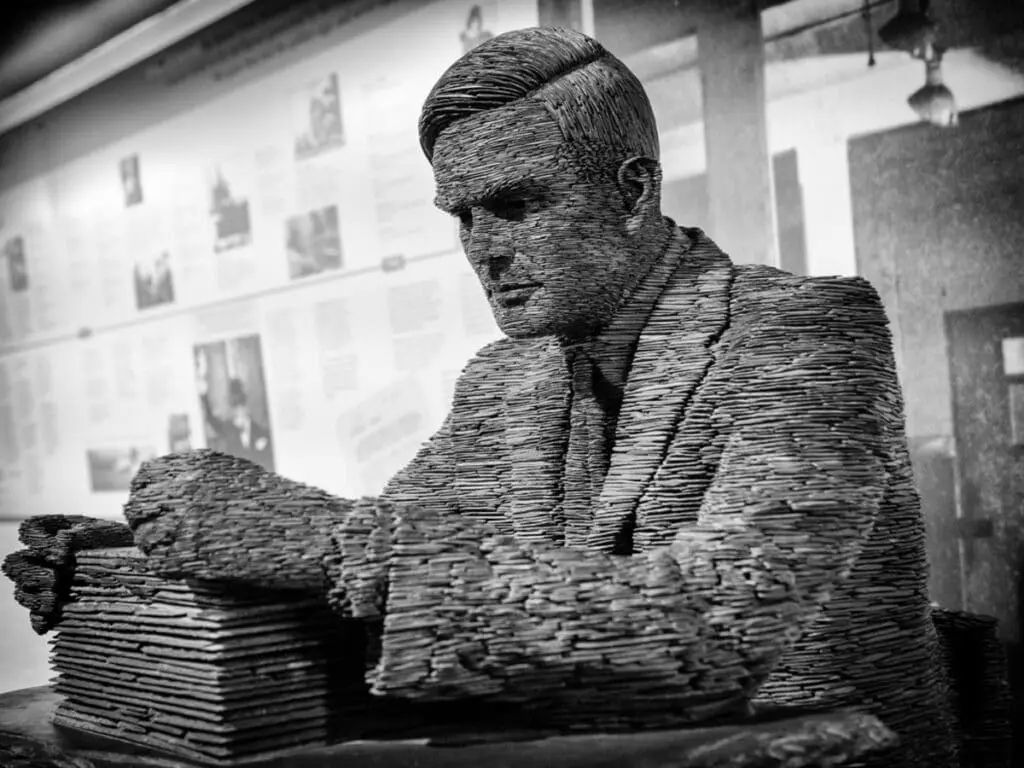
You may have heard of Alan Turing through the semi-recent big-screen flic starring Benedict Cumberbatch. He played a major part in the Second World War, helping crack German codes that gave The Allies the edge in battle.
He lived at 2 Warrington Crescent in the Maida Vale neighbourhood of London and is commemorated there by a blue plaque.
In spite of his enormous contributions to the war effort, it wasn’t until much later in life that was recognised as a hero. That’s partly because the work he was doing was shrouded in secrecy, but also because he was known to be maintaining a sexual relationship with another man.
Jimi Hendrix
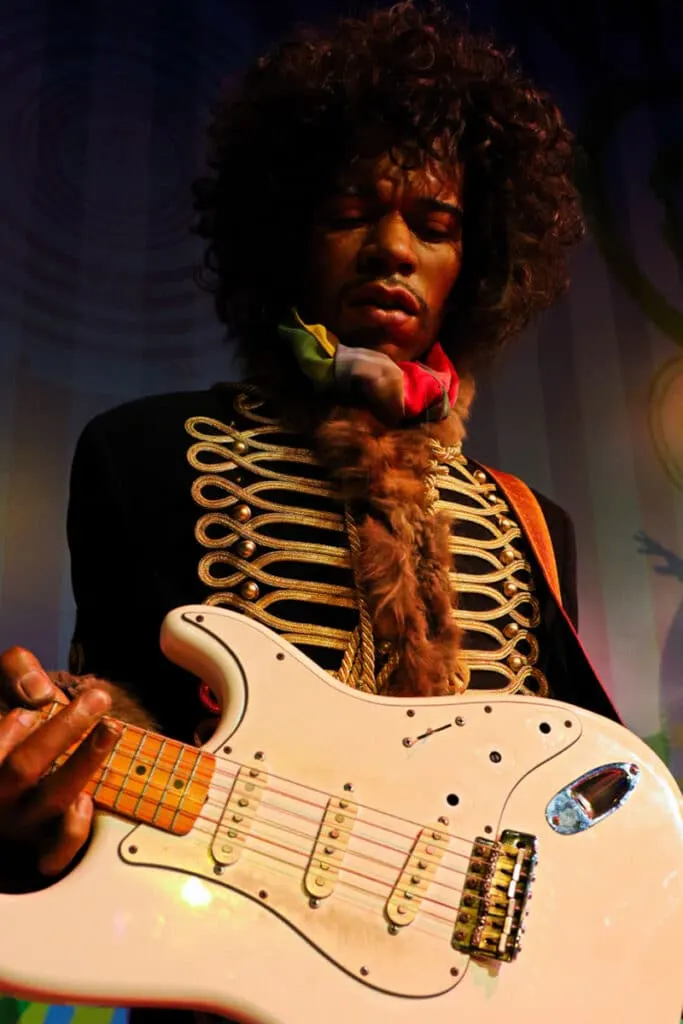
Here’s a name that needs no introduction. Guitar’s greatest legend spent much of his career with London as his base while regularly off touring The States, Britain and Europe. He gets a blue plaque at 23 Brook Street in Mayfair where he lived from 1968-69 with his girlfriend Kathy Etchingham.
Interestingly enough the house is right next door to another blue-plaque-holding residence – that of the great composer Handel who lived at this spot from 1723 until his death in 1759.
When a journalist asked Hendrix about next door’s blue plaque the guitarist is quoted as having said ‘to tell you the God’s honest truth, I haven’t heard much of the fella’s stuff’.
J.M.W Turner
Britain’s most famous painter lived, for much of his life, in various London residencies. His blue plaque is in Twickenham at 40 Sandycombe Road in a house he actually designed and then lived in for thirteen years.
He spent time at this house sketching views of the Thames and then turning them into oil paintings. Turner’s House is now a museum that you can go and visit, though, on a side note, our favourite Turner building is The Tunrer Old Star in Wapping – the pub he bought to carry out his sordid affairs with women of the night.
You can also visit the watering hole, and they still serve a good pint.
The Suffragist HQ
The location to be commemorated with London’s 1000th blue plaque in 2023 is not the residence of one notable person but the headquarters of a group of very important people, The Suffragists.
The Women’s Freedom League used this Westminster building at 1 Robert Street to run their campaign of equality for women – a movement summed up powerfully in their slogan ‘Dare to be Free’.
The work they did from this building would go on to pave the way for women to get the vote after the First World War and the many other points of equality that we now take as the norm.
London Blue Plaque Guide: Practical Tips
FAQ Section

